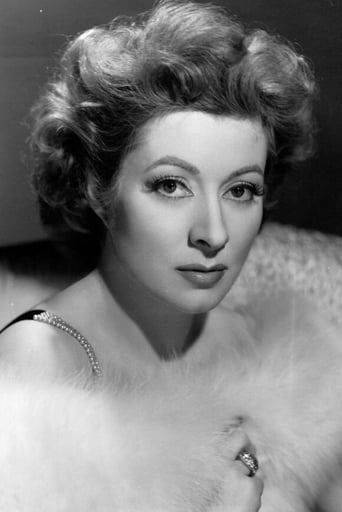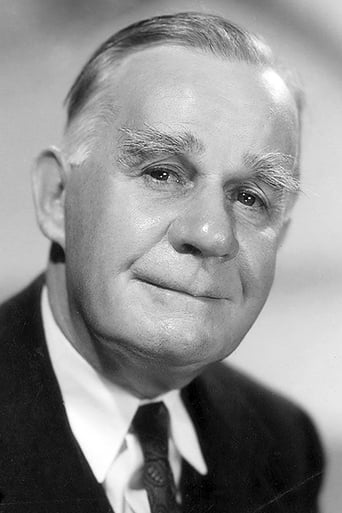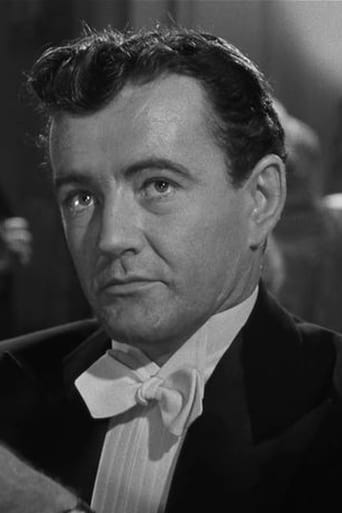Linkshoch
Wonderful Movie
Lovesusti
The Worst Film Ever
Portia Hilton
Blistering performances.
Juana
what a terribly boring film. I'm sorry but this is absolutely not deserving of best picture and will be forgotten quickly. Entertaining and engaging cinema? No. Nothing performances with flat faces and mistaking silence for subtlety.
kenjha
This is the biography of the Curies, who discovered radium. This one gets off to a fine start as the socially awkward scientist Pidgeon finds himself drawn to Garson, a student with great scientific aptitude. Having worked with each other so often, the two stars have terrific chemistry (and physics?) and are quite believable in the roles of the famed scientists. Then comes the experimentation that lead to the discovery of radium and the concept of radioactivity. This is fascinating stuff but does not make for great cinema, causing things to bog down in the latter parts of the film. Still, it's a handsome production that's well worth watching.
wes-connors
Polish science student Greer Garson (as Marie Sklodowska) goes to study in Paris and is accepted as an intern by reserved physicist Walter Pidgeon (as Pierre Curie). Ms. Garson's amazing beauty immediately causes Mr. Pidgeon and young assistant Robert Walker (as David Le Gros) to become distracted in the laboratory, but they grow accustomed to her attractiveness. When Garson graduates, she plans on returning to Poland, but Pidgeon proposes she stay and become "Madame Curie". Garson has noticed an irregularity which leads the couple to discover the element radium...This was a prestige project from MGM, which they secured for Greta Garbo. She telegrammed, "Wonderful plans," but requested a complete manuscript. After some scrambling, there was no complete script. At the time, Garbo felt the roles the MGM offered to her were too repetitive. In hindsight, "Madame Curie" doesn't appear all that different from other Garbo roles, so it may have ended well. Garson and "Two-Faced Woman" (1941) photographer Joseph Ruttenberg certainly showed he would good with Garbo, if she was interested in hiving him another shot. The MGM team shows their usual skill throughout, although the resulting film was less than indicated by seven "Academy Award" nominations.****** Madame Curie (12/15/43) Mervyn LeRoy ~ Greer Garson, Walter Pidgeon, Albert Bassermann, Robert Walker
T Y
This is not the future of film, but it hardly matters, it's a satisfying curio. It's the earliest film I've seen that shows non-mainstream people interested in other people only by way of the ideas that excite them; and a discipline-specific surrogate family providing strong social support. All that, while placing a woman on convincing equal footing with contemporary male intellects. Greer's character makes only small concessions to warmth and conventionHere, the heroic boilerplate speeches that are given by the Curies, are of their time. The Curies speak in some stilted noble-ese, as does the narrator. The camera usually occupies film space like a silent, polite, bourgeoisie Victorian. All of that is dubious. And while dramatically false, the movie is still more interesting than I would have ever imagined. I appreciate that it has the courage to be almost dull to mass audiences for lengthy periods. It also assumes audiences are mature enough to observe the tedious, isolated, methodical nature of scientific experimentation without grousing. I found much of the movie fascinating, and thought it a courageous choice in 1943 to let me observe. The movie also adopts a gently comic tone towards the Curies with their strange, geeky drives and obsessive interests. Occasionally, perhaps at the exact rate an audience needs, the movie offers a visual superior to the rest of the film; a zoom in to a hand... a time lapse process... a pullback to slowly reveal the impressive scale of an experiment. The always stiff Walter Pidgeon gets some doozies to recite: "Marie, this new concept... if we can prove the existence of this new element, it may enable us to look into the secret of life itself, deeper than ever before, in the history of the world" Wow, that's the kind of dreck that Pidgeon spouts with total sincerity throughout his whole career. Mind you he says it within a minute of saying something dramatically indistinguishable from it.The purpose of this movie is didactic. The makers of the film clearly believe the goal is to produce better citizens (tons of that product would follow in the '50s). Although I only own movies that aim higher than this, I have recently concluded that the percentage of unusually good films is, sadly, just as low among those that have pretensions of art as among those that do not. There might be 1 good mainstream movie a year, compared to 1.5 thoughtful films. Most filmmakers have nothing to say. If you like the movie, be sure to view the featurette "the Romance of Radium" which though reductivist and pseudo-scientific is still rather interesting.
bkoganbing
For their third MGM collaboration, Walter Pidgeon and Greer Garson were cast as Pierre and Marie Curie in this epic biographical drama about the first woman to win a Nobel Prize in science. The Curies contribution to science was a newly discovered element radium which did nothing less than alter how we think about matter itself. The film carries the story of Marie Curie's life when she was a young student at the Sorbonne from Poland under her maiden name of Sklodowska. The mere fact she was a student there and a brilliant one was highly unusual for women in the 19th century. Her brilliance attracts the attention of young instructor there Pierre Curie, first her mind and then her heart.Pierre and Marie Curie seem such a perfect fit for each other mainly because Pidgeon and Garson worked so well together on screen. Both got nominations for Best Actor and Actress for 1943, repeating what they had done for Mrs. Miniver in 1942. This was Pidgeon's second and last nomination. They lost to Paul Lukas and Jennifer Jones in their respective categories. The film itself was nominated for Best Picture but lost to Casablanca.What I like most about Madame Curie is that you don't need a degree in physics to understand what's happening. The actors, the direction by Mervyn LeRoy and the script all are at their best.Look for up and coming MGM stalwarts like Robert Walker and Van Johnson to play brief roles. Easy to tell why both became stars.I think Madame Curie and her husband would both have liked the way they were portrayed in this film.






